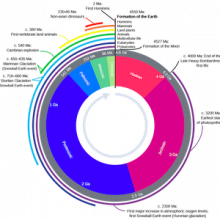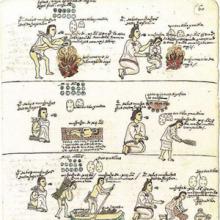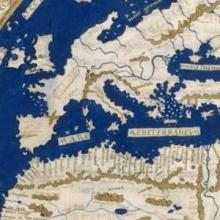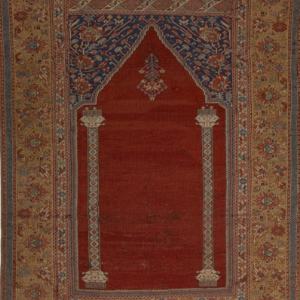Early Modern (1450 CE - 1800 CE)

Primer: Big History
Big History is an approach to world history that takes as its subject the story of the whole of the Universe, from its creation, 13.8 billion years ago, in the Big Bang.
Excerpt from letter by Lady Mary Wortley
Travel writing by women can reveal a number of themes in world history. One useful example are the letters written by Lady Mary Wortley Montagu (1689-1786) who worked as a missionary in Turkey.

Salisbury Crags
Before about 1800, most people in the Christian world assumed that the earth was just a few thousand years old. But growing interest in fossils and strange geological formations made some people think the earth must actually be much older.

History of the Earth in a Cycle
Our sense of time has been extended into the deep past in the last two centuries or so, and particularly since the 1950s, when Willard Libby showed that you could use the breakdown of radioactive molecules such as Carbon-14 to date events thousands of years before there were any written documents

Primer: Gender in World History
Gender history developed in the 1980s out of women’s history, when historians familiar with studying women increasingly began to discuss the ways in which systems of sexual differentiation affected both women and men.

Short Teaching Module: European Maps of the Early Modern World
I use images of three historical maps for topics on colonial exploration and for interpreting historical evidence in undergraduate courses on history and historical methodology. I have several aims in using the maps.

From John Bartholomew, Literary and historical atlas of America
This unusual map appeared in a 1911 atlas of America by John George Bartholomew, a prestigious Scottish cartographer and geographer. In this map Bartholomew dramatized the provincialism of European cartography three centuries earlier.

World map by Henricus Martellus
Henricus Martellus was a German geographer and cartographer who worked in the Italian city of Florence from 1480 to 1496. His book of 1490, Insularium Illustratum ("Illustrated Book of Islands"), in which this map appeared, was widely circulated for two reasons.

Early Modern Ottoman Carpet at the Walters Art Museum
This carpet is a specific type of carpet woven in the Islamic world called a sajjadah or prayer rug.

Islamic Carpet made in Ottoman Turkey at The Metropolitan Museum of Art
This carpet is a specific type of carpet woven in the Islamic world called a sajjadah or prayer rug.